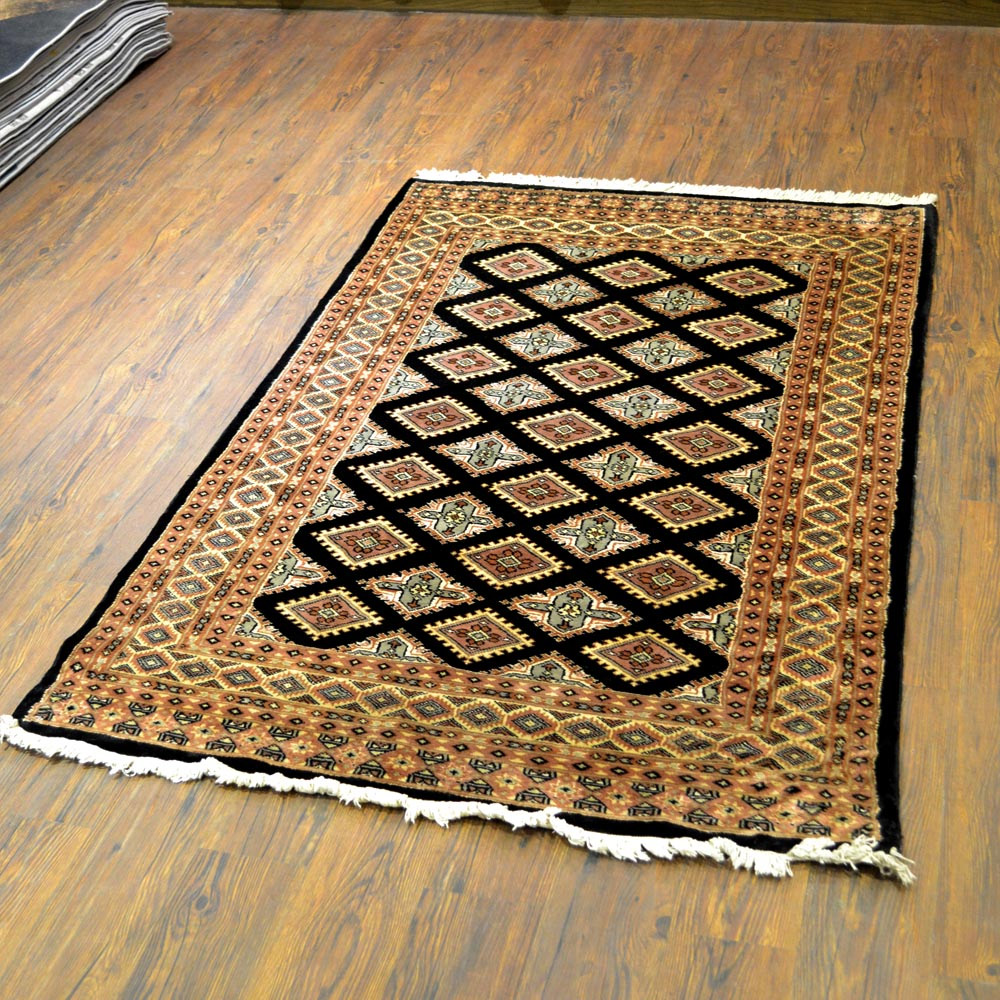A handmade Jaldar rug can be one of the most interesting types to purchase for your new house. Prepared using traditional methods, this flat weave rug is made from pure wool and the yarn is then colored using natural dyes.
If you are yet to invest in this beauty beast and are curious to buy Jaldar rugs online, then you have come to the right place for information.

In this guide about Jaldar handmade rugs, we will describe what to look for in terms of design, construction and aesthetics.
When you are done reading this guide about Jaldar handmade rugs, you will have a much better idea of how to identify these beautiful carpets if you come across them when shopping.
Let's get started.
What is a Handmade Jaldar Rug?
A handmade Jaldar rug is extremely high quality and durable type of carpet. It is made using a special tapestry weave construction, which means that it will have high knot density so the finished product is very durable.
Jaldi means quick and Ru means flow in the local Sindhi language spoken by the Sindh tribe. Jaldar means "quick flow" and describes the speed at which these handmade rugs are made, typically up 4 months.
History of Jaldar Handmade Rugs
Jaldar rugs are likely to have been produced in northwest Persia or around the town of Jaldar, close to the border with Armenia.
Today, these rugs are woven in the Asian region.
Although it is not known exactly when this style came about, some believe that they were first developed between 1800 and 1810 AD.
They were originally designed as door and window covers.
The other reportedly known historical segments say:
Jaldar handmade rugs originated from the northwestern region of India known as Sindh. This area is in Pakistan today.
The origins of this particular style of rugs date back to the fifth century during the early empires of Harappa and Mohenjo-Daro.
They are also thought to be direct descendants of the famous Persian Sarouk rugs as well as the Baluch weavings.
Their history makes them old and hence they would probably be more expensive and long lasting than your average machine modern rug.
They are currently woven in Iran, Pakistan and Afghanistan where traditional weavers prepare them by hand.
Design Elements Associated with Jaldar Rugs
Jaldar rugs are flat weaves, with designs that are made using pattern dyes. You can easily spot them due to the two rows of double borders which adorn these rugs.
Furthermore, these rugs are known for their beautiful designs that depict a multitude of geometric shapes and they will also sometimes include interlacing elements.
Moreover, they also sometimes include one or two rows of double borders and can also have a medallion in the center.

Jaldar rugs are known for their beautiful composition, absolute unlike other types of carpets. They are hand-knotted in cotton warp and wool filling.
Jaldar rugs were first designed to act as door and window covers, a tradition that lives on today.
The Uniqueness of Jaldar Rugs
Jaldar rugs are famous for their unique and intricately woven designs and their intricate patterns.
They are usually made of wool, but may also be made of silk or cotton. As we have already said, the most striking feature is the double border.
Jaldar rugs are also made with traditional designs and patterns (most notably an octagon medallion), but can also come with a single border.
These rugs are made using the double ikat method of weaving, which gives them their unique look.
What to Look for When Identifying a Jaldar Rug
Since each handmade Jaldar is made exclusively by hand, there are no two rugs that look exactly alike.
In fact, it's quite common for these rugs to have small differences from one another. It is easy to notice the differences when you know what to look for.
Jaldar rugs are also associated with Sarooq and Yamoud designs. These designs are borrowed from other regions as well as the Middle East.
When you see an unknown Jaldar rug, there are several factors that can help to identify it.
These include the materials used to make the base, the motifs and the construction method employed.
We will now look at each of these components in more detail so that you will know what to look for when you are trying to identify a Jaldar rug.
Materials Used in the Base
The foundation used is often made from sheep's wool although goat's hair or camel hair may be used instead. Wool will have long, hair-like fibres and it is soft, warm and fluffy.
On the other hand, hair has a smooth surface and is slightly coarser than wool.
When you are identifying a Jaldar rug, then what you need to look for is the quality of the foundation. A high-quality base will be made using either silk or wool.
Motifs
The motifs on Jaldar rugs are usually floral patterns, flowers, leaves or animals such as roosters. It is quite common for these rugs to have multiple borders that are filled with flowers.
The blooms found in the centre of the rug will be different from those on the edges, although they can sometimes resemble one another.
There may also be leaves and vines that fill the field of the rug. Especially if the base of the rug is made using camel hair, then these motifs will stand out against it.
Knot Density
The knot density is also one of the factors that can help you in identifying a Jaldar rug.
Fine rugs will have approximately 100 knots per square inch, while medium quality rugs will have about 160 to 175 knots per square inch.
The high-end Jaldars can have up to 100 or 240 knots per square inch.
Construction Method
Jaldar rugs are created using a tapestry weave method. This involves passing many different colored yarns over and under one another to create a pattern.
The most common colors found in these rugs include blue, red and ivory although they may also contain green and yellow colorings too.
Traditional Jaldar patterns will be made using symmetrical shapes. However, some modern rugs may use asymmetrical designs instead.
What's Special about Jaldar Handmade Rugs?
Although Jaldar rugs are not the most expensive types of handmade carpets, they still offer a number of amazing benefits that must be considered.
First, these rugs may take up to a year or more to make. It can take quite some time for a weaver to finish one worth using in your home.
In addition to this, Jaldar rugs are known for their beautiful colors and vibrant designs. If you want a rug that will make your home more beautiful, then this type is right for you.
Jaldar Rugs - Conclusion
As you can see, there is much to learn about Jaldar handmade rugs and it takes time and experience before you will be able to identify one easily.
From the materials used in their construction to the motifs present on them, these rugs are as unique as those who made them.
If you are interested in purchasing one for yourself, then you can buy Jaldar rugs online but make sure to keep all of the things that we have discussed here in mind.













